- News
- Reviews
- Bikes
- Accessories
- Accessories - misc
- Computer mounts
- Bags
- Bar ends
- Bike bags & cases
- Bottle cages
- Bottles
- Cameras
- Car racks
- Child seats
- Computers
- Glasses
- GPS units
- Helmets
- Lights - front
- Lights - rear
- Lights - sets
- Locks
- Mirrors
- Mudguards
- Racks
- Pumps & CO2 inflators
- Puncture kits
- Reflectives
- Smart watches
- Stands and racks
- Trailers
- Clothing
- Components
- Bar tape & grips
- Bottom brackets
- Brake & gear cables
- Brake & STI levers
- Brake pads & spares
- Brakes
- Cassettes & freewheels
- Chains
- Chainsets & chainrings
- Derailleurs - front
- Derailleurs - rear
- Forks
- Gear levers & shifters
- Groupsets
- Handlebars & extensions
- Headsets
- Hubs
- Inner tubes
- Pedals
- Quick releases & skewers
- Saddles
- Seatposts
- Stems
- Wheels
- Tyres
- Health, fitness and nutrition
- Tools and workshop
- Miscellaneous
- Cross country mountain bikes
- Tubeless valves
- Buyers Guides
- Features
- Forum
- Recommends
- Podcast
feature
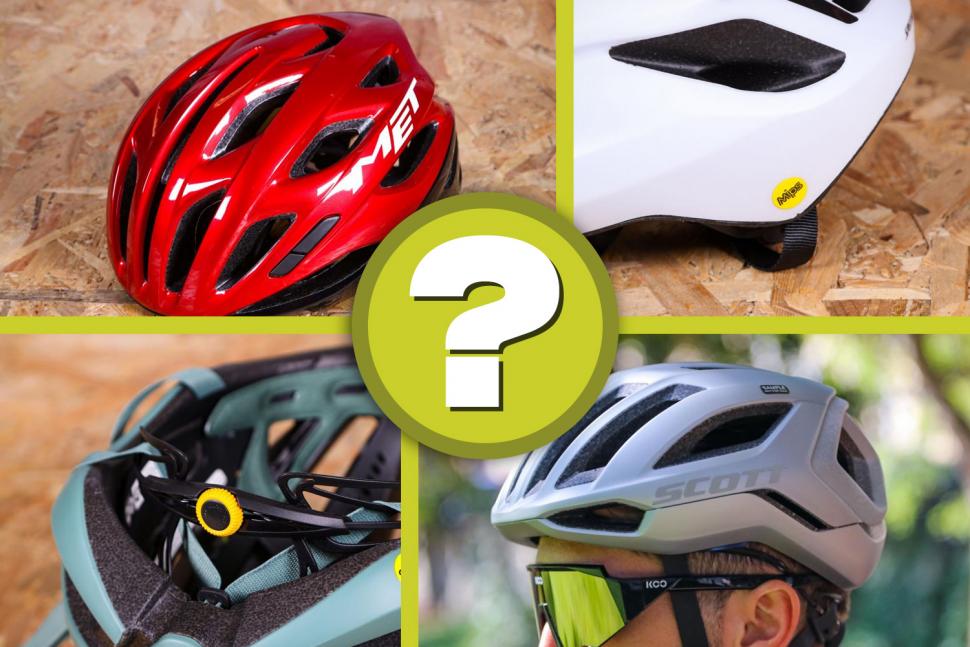 When should you get a new cycling helmet? March 2022
When should you get a new cycling helmet? March 2022When should you get a new cycling helmet?
If you choose to wear a bike helmet you’ll want to be sure it's in peak condition. We asked experts from Giro, Met and Bontrager when and why you should replace your lid.
Do you need to change your helmet after a certain amount of time, even if you haven't had a crash?
“It really depends on how much care you take of the helmet,” says April Beard, Bontrager's product manager for helmets. “There is no evidence that the EPS liner will deteriorate from age, but there are things such as solvents, chemicals, environmental exposure, that can degrade the performance of the helmet.”
Helmets.org, a non-profit consumer-funded programme providing bicycle helmet information, largely backs up the manufacturer stance. They cite data from an MEA Forensic study in 2015 that found that the foam liners of used but not crashed helmets retained their performance over many years, with some the helmets tested being 26 years old.
The Snell Motorcycle Foundation has a slightly different stance, saying, “Glues, resins and other materials used in helmet production can affect liner materials. Hair oils, body fluids and cosmetics, as well as normal ‘wear and tear’ all contribute to helmet degradation.”
For these reasons, and the fact that noticeable improvements in the protective characteristic of helmets take place over time due to advances in materials, designs and production methods, Snell recommends a five-year helmet replacement period.
Check out our helmet reviews here
Ulysse Daessle of Italian brand Met says, “As we can’t follow the history and the usage of each helmet, we suggest that customers replace their helmet after three to five years of use. We arrived at this recommendation because the statistics of average use show that this is when a big percentage of helmets have been subject to hard conditions, crashes, marks of use…”
“That’s not to say the helmet will automatically be unsafe after five years, but as manufacturer we have to advise the customer: a helmet is a safety device and you really need to take care of it and change it in case of doubt. So we take this safety margin and advise you to change your helmet after five years of use.”
Find out about 8 of the best cheap cycling helmets — decent lids that don't cost a fortune
Giro’s advice is the same.
“We make a general recommendation that you replace your helmet every three to five years depending on use and handling,” says senior brand manager Eric Richter. “This is based on observation of the average user and factors like wear over time, weather, handling, the potential for degradation from personal care products like sunscreen or bug spray, and the simple fact that helmet technology does improve over time.”
Should you change your helmet after a small tumble, even if you didn't hit it hard and there's no sign of damage?
You had a minor tumble off the bike, hitting your head but not very hard, or you accidentally dropped your helmet onto the road while carrying it; the helmet isn't broken and the shell looks fine, so surely it's okay to keep using it?
“It’s really hard to say,” says Met’s Ulysse Daessle. “It depends of many factors and we can’t say anything definitive as we are not inside the helmet! We advise in any case a really careful inspection in order to detect any cracks, bumps or scratches. If there’s any doubt, change the helmet.”
Giro’s Eric Richter says, “If you fall and the helmet is impacted, you should have it inspected or replaced immediately, even if no damage is visible. The reason is that helmet liners are made to absorb energy from impacts and they do this through their own degradation or destruction – like an airbag in a car. If the liner is compromised from an impact or other factors, it may not offer the full protective capability it was designed to provide.”
Read 16 of the best high-performance helmets that combine light weight, aerodynamics and comfort
It's not just the EPS foam that can get damaged in a minor crash. You should also think about the integrity of the rest of the helmet – the straps and the fit system, for example, which are critical to securing the helmet properly on your head.
“Bear in mind that if the helmet did its job most people would tell you that they did not even hit their head, or did not hit their head that hard,” says Helmets.org.
You might have felt only a minor bump while the helmet received quite a serious blow. Most helmet manufacturers – Giro, Met and Bontrager included – offer crash replacement schemes where you can get a new helmet at a discount price after a nasty incident as long as it’s within a specified period after purchase, so it makes good sense to err on the side of caution here.
What are the signs that a bike helmet is compromised, visually or otherwise?
Regular inspection of your bike helmet for damage is sensible, but what exactly should you be looking out for?
“It’s easy to spot some signs telling you to replace your helmet,” says Ulysse Daessle of Met. “After a crash, damages like cracks to the EPS, bumps on the polycarbonate outer shell, wear and tears marks, could be visible.”
Giro’s Eric Richter says, “If a helmet is visibly damaged – a cracked outer shell, crushed or cracked foam liner or any other damage – don’t use it.
Any exposed EPS can start to look chipped or worn and if the polycarbonate shell shows a dent of any sort then you should replace the helmet. You might think that a small piece missing from the edge of the helmet isn’t important but there may be hidden damage to the construction.
Look inside the vents for any cracks or splitting of the EPS, and if the polycarbonate shell is separating from the EPS it's time for a new lid.
Find out whether an aero helmet is right for you
“It’s also important to understand than a helmet’s structure might be affected by heat, chemicals, stickers applied on the surface with unknown chemicals, or simply by cleaning the helmet with the wrong product [more on that in a mo],” says Ulysse Daessle. “Those are damages that are hard to spot and it’s up to the rider to be aware of this and take care of the helmet.”
Eric Richter says, “Remember that helmets don’t last forever and damage is not always visible. If at any time you are unsure about your helmet, or have questions about your helmet’s condition, we recommend that you visit your local retailer or contact the manufacturer before riding with it.”
The Helmets.org website also has a guide to inspecting your helmet, which is well worth a read if you're unsure.
How should you treat your helmet in order to get the longest and safest use from it?
The most important thing you can do to maximise the lifespan of your bike helmet is protect it from bumps and bangs wherever possible. If you take your bike in the car, for example, consider storing your helmet in a padded bag to keep it safe.
“Helmets are generally made of materials that can be damaged by many commonly-available cleaners,” says Giro’s Eric Richter. “Petroleum-based solvents or cleaners are especially dangerous. They can damage a helmet so that its protective capabilities are significantly reduced. Oftentimes this damage is not visible.
“For best results, clean the helmet using a soft cloth or sponge, warm water and mild soap (such as a mild dish soap). Allow the helmet to air dry and then store it in a cool, dry place where it won’t get damaged.”
Met’s Ulysse Daessle says, “As you put much love into taking care of your bike, it has to be the same for your helmet. Respect some basics: store it away from heat, sun and chemical products. Don’t do anything stupid with it like sitting on it or throwing it on the ground. Clean it with water and soap only, and don’t put any chemical, glue, paint or stickers on it as this might affect the characteristics of the shell.”
Eric Richter adds, “Treating the helmet with care and not exposing it to extreme temperatures will ensure the helmet lasts as long as possible.”
The boot of your car can get very hot in the summer, for example, as can a kitbag in direct sunlight.
You should replace the pads from time to time primarily for safety reasons – they help secure the helmet in the correct position on your head. There’s also comfort and hygiene to think about.
Beware of insect repellents too, in particular, those that contain DEET because, like some other chemicals, they can compromise the construction of the helmet as well as the appearance.
Quite a lot of modern helmets – particularly higher end ones – come with a MIPS (Multi-directional Impact Protection System) liner that’s designed to reduce the rotational forces that can result from certain impacts.
“The MIPS liner should not be removed or tampered with,” says April Beard of Bontrager. “You can wash it with a solution of mild soap and water, without removing it from the helmet. If any part of the MIPS system breaks you should replace the helmet.”
Latest Comments
- brooksby 2 sec ago
Or even better: make driving licences weight-restricted. AIUI you have to take a different test to be able to drive a minibus or a LGV or a HGV....
- NPlus1Bikelights 38 min 58 sec ago
I think buying anything off Covert Instruments would equate to going equipped over here.
- David9694 1 hour 13 min ago
Cromwell Road parking 'nightmare' next to Dorchester South...
- Sredlums 1 hour 46 min ago
I tried, but I just cannot in earnest believe that this question is sincere.
- Doctor Fegg 2 hours 57 min ago
Ah, British Cycling and the UCI. It's hard to think of two more universally beloved organisations. Thames Water and the National Rifle Association...
- David9694 3 hours 33 min ago
Car hits stone wall and overturns in smash outside Wiltshire pub...
- wtjs 4 hours 29 min ago
We get these 'high action rate' claims all the time, with little or no evidence of what the action was. People are, of course, entitled to consider...
- Bungle_52 4 hours 43 min ago
Thank you. Can't say I've ever seen one but I will keep a lookout in future.
- chrisonabike 4 hours 44 min ago
Part of me hopes they don't waste the money. If past performance is any guide poor resurfacing (particularly around utility access points), "works...
- SimoninSpalding 7 hours 16 min ago
I have Cors N:ext on my summer bike, mainly because they do a 24mm, 25 is REALLY tight on rear brake clearance. I am not impressed with how the...
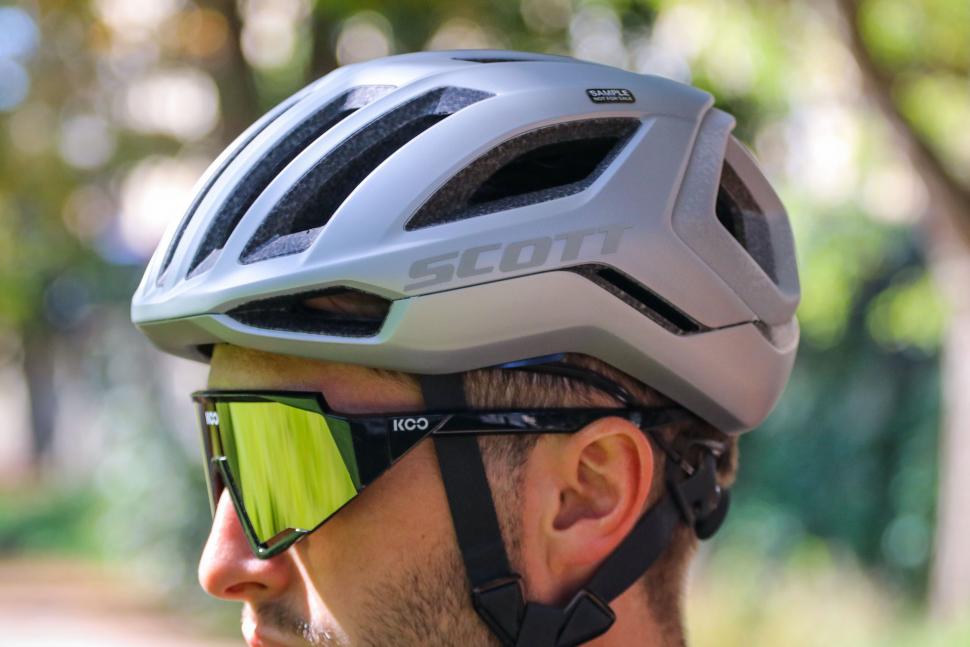

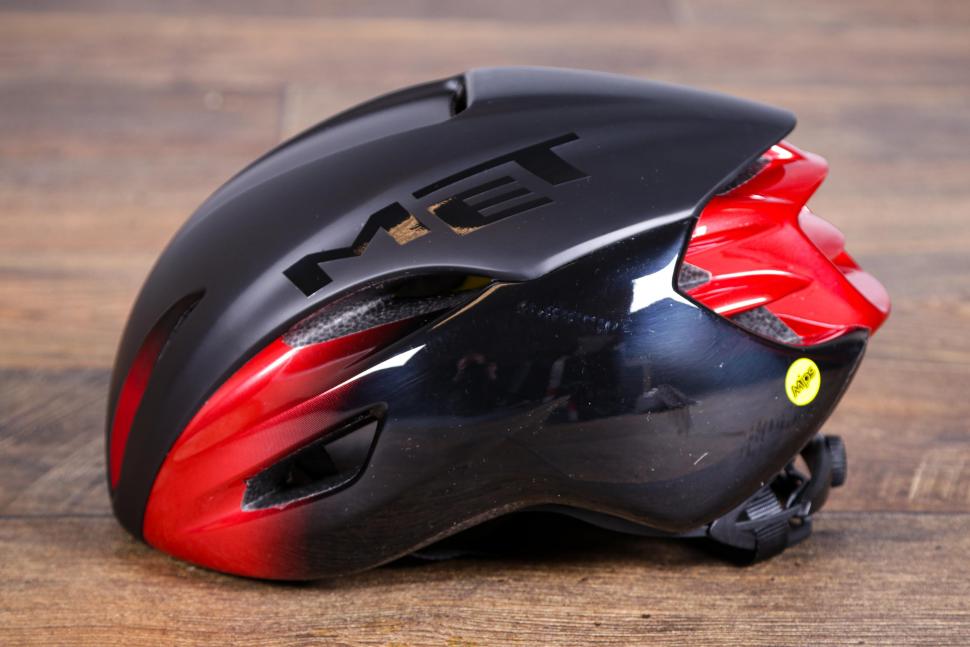
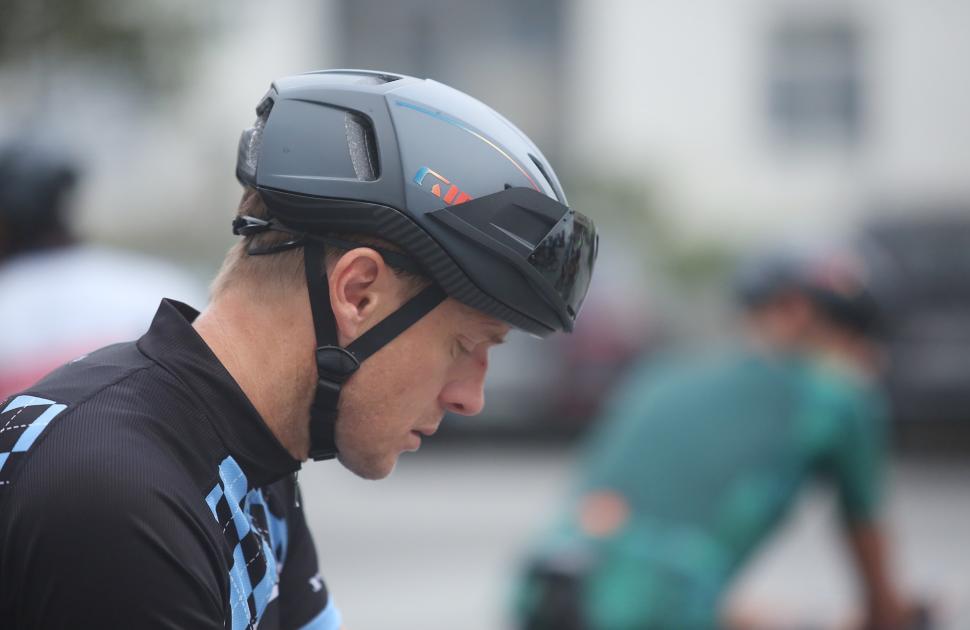
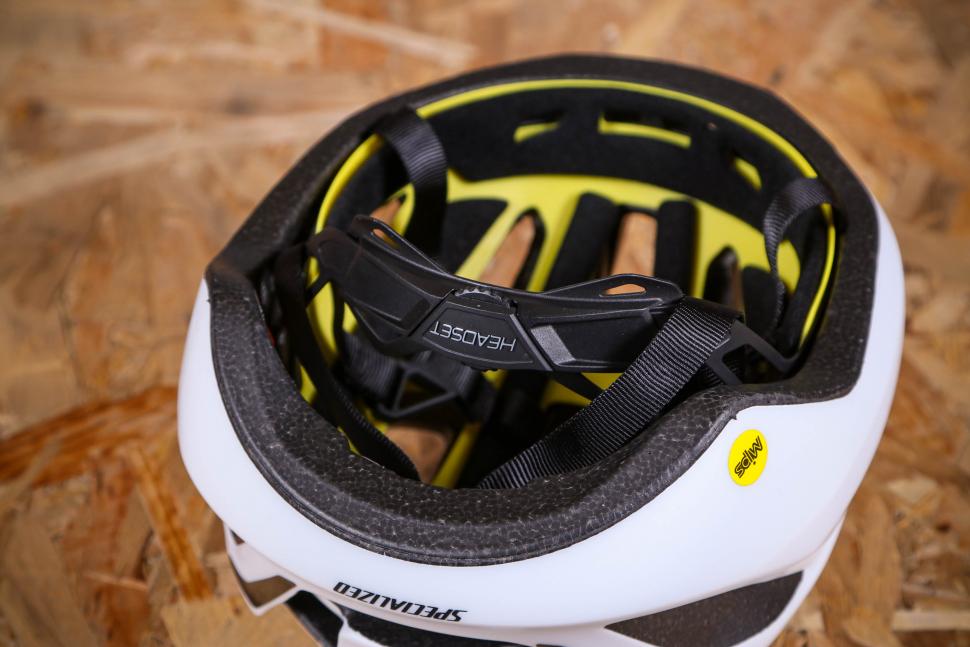

Add new comment
24 comments
Does this article have any relevant information for consumers? Who doesn't know you need to replace a helmet when you crack it? Also what drastically goes wrong exactly 5 years after owning a helmet that renders it useless?
Hit the deck last year and split my helmet, thats when I replaced it.
translation: we asked salespeople how frequently you should buy again.
Given this has reappeared: HP have you got the Hedkayse ?
Yes - I received mine a few months ago. However, I tried it on briefly and didn't find it particularly comfortable and it's a little heavier than the cheap lid that I'm currently using, so I haven't started using it yet.
I'll probably get round to using it when the weather warms up a bit as I rotate between two helmets so that they've got time to dry after being sweated in.
Somebody ought to invent some sort of resilient cover you can put over the helmet to protect it in an accident. Especially the expensive ones.
The only reason to replace something which isn't effective is fashion, so you only need to replace your helmet when the fashion changes. Or you could read up a bit on helmets and just bin the thing, that way you never need to replace it.
What about when your favourite team gets a new helmet? Surely you don't expect me to be seen in public in last year's kit?
I replace my helmet whenever a new one comes out, then sell the old one on ebay and let someone else worry about it.
So, an expensive item that's not only nothing more than a fashion item is now enhanced i' the profitabilities by being named also an item of planned obsolescence.
If they are an effective safety aid (an unlikely proposition, given all the evidence showing they aren't) why are they not made to last? That was a rhetorical question as the answer is obvious and contained in this article.
The only part of the article that might be of use to the duped consumers is that some tests show that even a 26 year-old helmet remains as "effective" as it was when new. All the rest is just made-up-stuff pretending that you need to buy a new one because .... well, how else to keep the profits flowing?
But why do they bother putting out this puff to tempt consumers of the things to rush out and get another? After all, since they are just fashion items, the latest model will be rushed-out-for anyway.
Cugel
I have a few different Met Stradivarius in different colours that I have had for over 10 years. They are till very funky looking compared to some of the massive boxy designs now and most of the time they are sat on a nice dry shelf (especially the yellow one) with no UV exposure. No need to replace. My kit philosophy is find something you like/works and then get lots of them to spread the load.
Glad you still have your barnet Mungecrundle. Shame I know what they will say about your helmet <anecdotal evidence/you wouldn't take the risk if you weren't wearing it in the first place, blah blah blah. Boring.>
I tried your philosophy with wives.
My timetravel secret is out!
I love how carefully we are advised to treat our helmets by the manufacturers to avoid compromising its fumction. And yet we are still to believe that these things will save us from harm in all but the most extreme cases.
Anyway...
Replacing a helmet... for me, when it looks damaged or has been through a significant crash, or when it smells real, real bad, or it has gone so far our of fashion that it is embarrassing to wear it.
Yup. Someone gave you a too-hard stare? Might have caused damage - better replace it...

Would you have to replace a helmet if the only damage caused to it was by branches and shrubbery hitting it where the council hasn't trimmed back the greenery along a cycle path?
The Hedkayse One helmet passes the European EN 1078 requirement, but it DOES NOT pass the CPSC requirement which is tougher requirement (as is the Snell) than the EN 1078. I don't think I want my head protected by an inferior crash worthy helmet.
In regards to when to replace a helmet, besides all the reason listed in this article, I've found that the Styrofoam or that other stuff they use, after about 8 to 10 years will leave small foam particles, almost like sand on my head after a ride, that's when I know I need to replace the helmet.
This one needed replacement. Still have the same head though.
20170605_081008.jpg
A load of misleading nonsense from Snell. The latest Snell standards are less stringent that the older ones. But virtually nobody sells a helmet in the UK these days that is certified to the Snell standards. They are all certified to the even weaker still EN standard. So there has been a noticeable degredation of the protective characteristics of helmets over time. An old Snell certified helmet will probably still protect much better than the brand new EN ones you can buy in the shops.
Better still, take all the worry and guesswork out of the equation and get a Hedkayse (www.hedkayse.com). Buy once, no replacements needed.
I tried that and sponsored them on Indiegogo and have been waiting since 2016. Still nothing, so technically, I haven't needed any replacements as you can't replace something you've never received. Buy once, receive nothing.
Hi Peter, Hi timboid
Full disclosure - I'm Iain from Hedkayse. Found these comments after having a read through a load of fourm posts that are interesting to us. And we love this one!
Both, thanks for being early adopters. You're helmet will be with you very soon - yes! it's happening.
Peter, you're actually one of the first that'll get theirs as you were one of the first on board! timboid, we'll make sure you get slipped up the list for your continued faith.
Any other Q's, get us on twitter @ Hedkayse.
Hey, this thread got resurrected!
I'm still waiting for my Hedkayse by the way.
.
zdarkhelmet.jpg